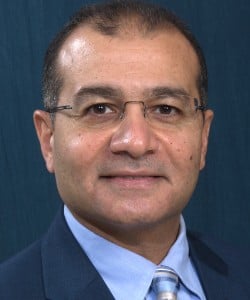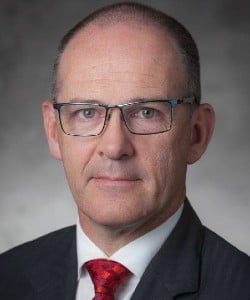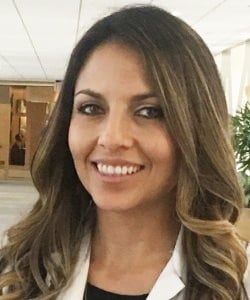Expert Scanning Demonstrations
Registrants of the ASRA spring 2021 meeting receive access to this bonus educational activity without additional fee. All registrants were emailed instructions to access these videos including the password. If you did not receive this email, please contact asrameetings@asra.com.
This is a separate educational activity with its own CME evaluation and certificate (see below). This activity will be available for one year.
Program
PoCUS: Airway, Lung, Cardiac
Dr. Stephen Haskins demonstrates fundamental point-of-care ultrasound techniques for airway, lung, and cardiac.
PoCUS: Gastric, FAST
Dr. Nadia Hernandez demonstrates gastric ultrasound and Focused Assessment with Sonography for Trauma.
Upper Extremity Blocks
Dr. Stuart Grant demonstrates optimal positioning of patients for upper-limb regional anesthesia.
Thoracic Wall Blocks
Dr Jeff Gadsden demonstrates indications and limitations of basic chest wall blocks.
Abdominal Wall Blocks
Dr. Hesham El Sharkawy demonstrates basic approaches and indications of abdominal plane blocks.
Lower Extremity Blocks
Dr. Nabil Elkassabany reviews the anatomy and sonoanatomy of nerve blocks for lower-limb regional anesthesia.
Blocks for Pediatrics
Dr. Karen Boretsky and Dr. Santhanam Suresh demonstrate approaches to interventional pain management and regional anesthesia in infants and children.
Planning Committee
Nabil Elkassabany, MD, MSCE, University of Pennsylvania, Philadelphia
Samer Narouze, MD, PhD, NEOMED, Ohio University, Western Reserve Hospital, Cuyahoga Falls, OH
Faculty

Karen Boretsky, MD, is trained in pediatric anesthesia, critical care, and regional anesthesia. She practiced pediatric and adult anesthesia for many years. In 2012, she became the director of the regional anesthesia program at Boston Children’s Hospital. Her research interests include evaluating the role of regional anesthesia in managing pain and recovery in children. She authored articles on novel regional anesthesia techniques and presents nationally and internationally. She is passionate to find ways to minimize pain and improve safety using regional anesthesia in children.
Dr. Boretsky has no conflicts of interest to disclose.

Nabil Elkassabany, MD, MSCE, is an associate professor in the department of anesthesiology and critical care at the Perelman School of Medicine, University of Pennsylvania in Philadelphia. He is the director of the sections of Regional and Orthopedic Anesthesiology and he is also the director of the regional anesthesiology and acute pain medicine fellowship. His research interest focuses on improving patients’ outcomes after regional anesthesia. He currently chairs the industry relation, and communication committees and he is a member of the board of directors of ASRA.
Dr. Elkassabany has no conflicts of interest to disclose.

Hesham Elsharkawy, MD, MBA, MSc, FASA, is a staff member at MetroHealth and associate professor at Case Western Reserve University in Cleveland, OH. Dr. Elsharkawy’s research focus has been on development of new technologies, new pain procedures, and the transition from acute to chronic pain. This interest led him to establish the Persistent Postoperative Pain Special Interest Group. He has experience in research, has contributed to the field of regional anesthesia, and has been invited to many lectures and workshops, in national and international conferences, and on numerous grand rounds. Dr. Elksharkawy is also actively involved in multiple research projects and multicenter studies and has received multiple grants to support research projects. The core of his educational activities is teaching residents and fellows in different clinical settings, as well as during formal lectures, journal clubs, simulation sessions, workshops, and problem-based learning discussions. He earned an MBA from Cleveland State University, which helps him to lead many departmental projects.
Dr. Elsharkawy has no conflicts of interest to disclose.

Jeff Gadsden, MD, FRCPC, FANZCA, is a staff anesthesiologist at Duke University Hospital in Durham, NC. He graduated with an MD in 1999 from Queen’s University in Kingston, ON, Canada, and undertook training in anesthesiology at the University of Toronto and St. Luke’s-Roosevelt Hospital in New York City. Dr. Gadsden holds fellowships with the Royal College of Physicians and Surgeons of Canada (anesthesia) and the Australian and New Zealand College of Anaesthetists, and he is board certified by the American Board of Anesthesiology. After working in both Canada and Australia, he decided to return to the United States to focus on his teaching and research interests of ultrasound-guided nerve blockade, the monitoring of regional anesthesia, trauma, and education.
Dr. Gadsden has the following disclosures: Consulting/Advisory Board: Pacira Biosciences; Funded Research (Individual): Mallinckrodt Pharmaceuticals.

Stuart Grant, MBChB, MMCI, trained in Glasgow, Scotland, before moving to the United States. He is chief of regional anesthesiology at the University of North Carolina Chapel Hill. He serves on the ASRA CME committee and directs the free-standing ASRA Ultrasound-Guided Regional Anesthesia Education Portfolio Cadaver courses. His textbook Ultrasound-Guided Regional Anesthesia is now in its second edition.
Dr. Grant has the following disclosures: Consulting/Advisory Board: B Braun; Funded Research (Institution): SPR Therapeutics; Royalties/Patent: Oxford University Press.
Stephen Haskins, MD, is a regional anesthesiologist trained at the Hospital for Special Surgery in New York, NY. During his fellowship, Dr. Haskins developed an interest in PoCUS, specifically focused cardiac ultrasound, lung ultrasound, abdominal ultrasound and gastric ultrasound. Dr. Haskins is the co-founder and co-chair of ASRA Perioperative Point-of-Care Ultrasound (PoCUS) Special Interest Group. He is also lead author for PoCUS for the Regional Anesthesiologist and Pain Specialist Review Series in Regional Anesthesia & Pain Medicine.
Dr. Haskins has no conflicts of interest to disclose.

Nadia Hernandez, MD, completed her anesthesiology residency at the Icahn School of Medicine at Mount Sinai Health System in New York, NY, followed by fellowship training in regional anesthesia and acute pain medicine. She moved back home to Texas where she serves as an assistant professor of anesthesiology at the University of Texas (UT) at Houston McGovern School of Medicine. After one year, Dr. Hernandez revamped the regional anesthesiology fellowship and was promoted to director of regional anesthesiology at UT Houston as well as program chair of the Regional Anesthesia and Perioperative Ultrasound Fellowship. She is one of the co-founding members of the ASRA Perioperative Point-of-Care Ultrasound Special Interest Group.
Dr. Hernandez has the following disclosure: Honoraria/Expenses: Butterfly Network, Inc.

Santhanam Suresh, MD, is the Arthur C. King Professor and chair of the department of pediatric anesthesiology at the Ann and Robert H. Lurie Children’s Hospital of Chicago, IL. He is a director of the American Board of Anesthesiology. He also serves as co-chair of the SmartTots Steering Committee, chair of the Educational Track Subcommittee on Pediatric Anesthesia for the American Society of Anesthesiologists, and member of the Board of Trustees for the International Anesthesia Research Society.
Dr. Suresh has the following disclosure: Honoraria/Expenses: American Board of Anesthesiology.
Educational objectives
After participating in this educational activity, participants should be able to:
- Review the anatomy and sono-anatomy of nerve blocks for lower limb regional anesthesia.
- Discuss basic approaches and indications of abdominal plane blocks.
- Describe the techniques to perform lung ultrasound.
- Differentiate the sonographic appearance of an empty stomach versus clear fluid or solid content.
- Determine optimal patient positioning during the performance of upper limb regional anesthesia.
- Identify indications and limitations of basic chest wall blocks
- Demonstrate approaches to regional anesthesia in children
Target audience
The ASRA CME program provides educational activities to physicians, residents, fellows, and scientists. ASRA supports a multidisciplinary and interprofessional approach to continuing education and patient care by also providing relevant education for other healthcare professionals not directly engaging in interventional regional anesthesia and/or pain medicine procedures. ASRA offers learning opportunities to the national and international healthcare community.
Accreditation and credit designation statements
| Credits - Video Recordings (Total HH:MM:SS 3:04:34) |
PoCUS: Airway, Lung, Cardiac (38:27)
PoCUS: Gastric, FAST (23:05)
Upper Extremity (22:13)
Thoracic Wall Blocks (30:11)
Abdominal Wall Blocks (25:07)
Lower Extremity (31:35)
Pediatric Regional Anesthesia (13:56)
| Total Credits: 3.0 |
Physicians
The American Society of Regional Anesthesia and Pain Medicine is accredited by the Accreditation Council for Continuing Medical Education (ACCME) to provide continuing medical education for physicians.
The American Society of Regional Anesthesia and Pain Medicine designates this internet activity enduring material for a maximum of 3.00 AMA PRA Category 1 Credits.™ Physicians should claim only the credit commensurate with the extent of their participation in the activity.
PAs (Physicians Assistants): AAPA accepts certificates of participation for educational activities certified for AMA PRA Category 1 Credit™ from organizations accredited by ACCME or a recognized state medical society. Physician assistants may receive a maximum of 3.00 hours of Category 1 credit for completing this program.
Nurse Practitioners: The American Association of Nurse Practitioners (AANP) accepts AMA PRA Category 1 Credits™ from organizations accredited by the ACCME. This activity has been approved for a maximum of 3.00 AMA PRA Category 1 Credits.™
Registered Nurses: Regulations dictate that only physicians may earn CME credits, however, many state Boards of Registered Nursing accept AMA PRA Category 1 Credits™ from organizations accredited by the ACCME. Attendees are responsible for confirming their specific board’s acceptance of ASRA-provided credits. This activity has been approved for a maximum of 3.00 AMA PRA Category 1 Credits.™
The American Board of Anesthesiology® MOCA®
This activity contributes to the CME requirements for Part II: Lifelong Learning and Self-Assessment of the American Board of Anesthesiology’s (ABA) redesigned Maintenance of Certification in Anesthesiology Program® (MOCA®), known as MOCA 2.0.™ Please consult the ABA website, www.theABA.org, for a list of all MOCA 2.0 requirements. Maintenance of Certification in Anesthesiology Program® and MOCA® are registered certification marks of The American Board of Anesthesiology.®
ASRA is an ABA-approved provider and, as a service to ASRA members and participants, CME credits are reported to the ABA. Participants must include their correctly formatted ABA ID number (34567890) during the online evaluation and credit claim process available at the conclusion of the activity. Once the online evaluation and credit claim process is closed, certificates will be issued and credits reported to the ABA. After this time, participants may request their CME certificate by contacting asrameetings@asra.com, but ASRA will no longer report credits to the ABA, which will then be the individual participant’s responsibility.
International credits
Royal College of Physicians and Surgeons of Canada: The Royal College of Physicians and Surgeons of Canada has agreements based on the mutual recognition of credit points with the American Medical Association for live and web-based (synchronous or asynchronous) educational events. You may submit your CME certificate directly for credit recognition of this accredited group learning activity (Section 1) as defined by the Maintenance of Certification program of The Royal College of Physicians and Surgeons of Canada. For more information, visit: www.royalcollege.ca
European Accreditation Council for Continuing Medical Education (UEMS-EACCME): The UEMS-EACCME has agreements based on the mutual recognition of credit points with the American Medical Association for live and e-learning educational events. Each medical specialist should claim only those hours of credit that he/she actually spent in the educational activity. The EACCME is an institution of the European Union of Medical Specialists (UEMS): www.uems.net
Commercial support disclosure
No industry support has been received for this educational activity.
Disclosure and resolution of personal conflicts of interest
Click here to view all faculty disclosures. In accordance with the ACCME’s Standards for Commercial Support and related policies, ASRA is committed to ensuring balance, independence, objectivity, and scientific rigor in its CME/CPD activities. Those in control of the educational content disclose all relevant relationships (financial or other) with any commercial interest that they or their spouse/partner have had within the past 12 months. If an individual refuses to disclose, they are disqualified from participating. Disclosure information is evaluated and conflicts of interest resolved. Disclosure is made to participants prior to the activity. Participants are asked to evaluate the objectivity and independence. Off-label or investigational use of a therapeutic product is also disclosed.